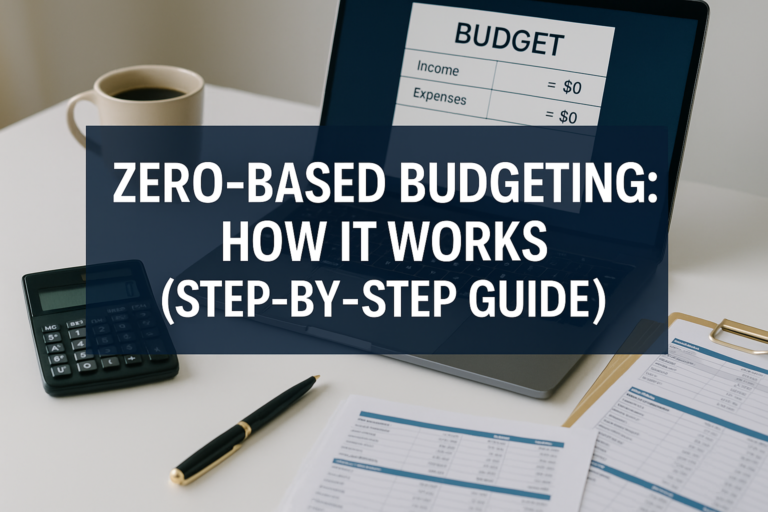Retirement may feel like a distant goal when you’re 30 and earning $80,000 a year, but with the right strategy, financial independence is more achievable than most people think. The key lies in how much you save, how you invest, and how disciplined you are with your money choices over the next 25 years. In this guide, we’ll show you exactly how a 30-year-old earning $80K can retire by 55, with realistic savings targets, investment strategies, and lifestyle adjustments to keep you on track. Max 401k Contribution 2025
TL;DR: Yes, if you’re 30 and making $80,000 a year, it’s realistic to retire by 55. The key is saving 30–40% of your income, investing consistently in 401(k), Roth IRA, and taxable accounts, and planning for taxes, healthcare, and early withdrawals.
Why Early Retirement on $80K Is Possible
Most people assume you need a six-figure salary to retire early. In reality, your savings rate matters more than your income. At $80,000 per year:
- Saving 30% ($24,000 annually) can grow into ~$1.5M by age 55.
- Saving 40% ($32,000 annually) can grow into ~$2.0M by age 55.
That’s enough to support a comfortable retirement, assuming you manage your lifestyle and investments wisely. Why invest
This is based on the Rule of 25: you should aim to have 25× your annual expenses saved to retire safely. For example:
- $50k/year lifestyle → $1.25M nest egg needed
- $60k/year lifestyle → $1.5M nest egg needed
- $80k/year lifestyle → $2.0M nest egg needed
(Source: Bankrate — Rule of 25)
Step 1: How Much You Need to Retire at 55
Let’s assume:
- Annual spending in retirement: $50,000
- Target nest egg (25× expenses): $1.25M
- Safety buffer for inflation/healthcare: $1.5M–$2.0M
Rule of Thumb: Every extra $10,000 of annual spending requires $250,000 more in savings. IRS Contribution Limits 2025 Explained (401k, IRA, HSA)
This makes it crystal clear — your lifestyle choice drives your retirement feasibility.
Step 2: The Savings Rate Math Retire at 55
Here’s what happens if you save different percentages of an $80k salary for 25 years (ages 30–55), assuming a 7% annual return:
| Savings Rate | Annual Savings | Nest Egg at 55 (~7% return) | Outcome |
|---|---|---|---|
| 20% | $16,000 | ~$1.0M | Not enough (retire at 65) |
| 30% | $24,000 | ~$1.5M | Lean FIRE |
| 40% | $32,000 | ~$2.0M | Comfortable FIRE |
The difference between retiring at 65 vs 55 often comes down to increasing your savings rate by just 10–15%.
Step 3: Where to Invest (401k, Roth IRA, Taxable) To Retire at 55
To retire early, you’ll need both tax-advantaged accounts (for long-term growth) and a taxable brokerage (for flexibility before age 59½). Roth IRA vs 401k
1. 401(k) or Roth 401(k)
- 2025 contribution limit: $23,000 (+$7,500 catch-up if 50+).
- Employer match = free money.
- Pre-tax 401(k): lowers today’s taxable income.
- Roth 401(k): grows tax-free, great for early retirees.
(Source: Fidelity 401(k) Contribution Limits)
2. Roth IRA
- 2025 contribution limit: $7,500.
- Withdraw contributions anytime (penalty-free).
- A Roth conversion ladder allows penalty-free withdrawals after 5 years.
(Source: IRS — Roth IRA Rules)
3. Taxable Brokerage Account
- No age restrictions.
- Use low-cost index funds like VTI (Vanguard Total Market) or VXUS (Vanguard International).
- Acts as your bridge account between 55 and 59½.
Step 4: Projecting Growth (Case Study)
Meet John, 30 years old, earning $80,000. He saves 30% of his income ($24k/year), investing in an 80% stock / 20% bond portfolio.
| Age | Portfolio Value (7% return) |
|---|---|
| 30 | $0 |
| 35 | ~$139,000 |
| 40 | ~$356,000 |
| 45 | ~$689,000 |
| 50 | ~$1.13M |
| 55 | ~$1.72M |
By 55, John reaches ~$1.7M, enough to cover ~$60k/year in retirement expenses using a safe 3.25% withdrawal rate. 3 fund portfolio
Step 5: Risks You Must Plan For
1. Inflation
$50k today ≈ $90k in 25 years (assuming 3% inflation). Adjust your savings target accordingly.
2. Healthcare Costs
Medicare starts at 65. From 55–65, you’ll need to budget for ACA marketplace insurance, COBRA, or private coverage. Expect $500–$1,000/month.
(Source: Healthcare.gov ACA Plans)
3. Withdrawal Rules
- 401(k)/IRA funds are normally locked until 59½.
- Exceptions: Rule of 55, Roth IRA contributions, or 72(t) SEPP withdrawals.
(Source: IRS — SEPP 72(t))
4. Market Volatility
The sequence of returns risk can derail early retirees. Solution: keep 2–3 years of expenses in cash/bonds as a buffer.
Step 6: Withdrawal Strategy: Retire at 55
To avoid penalties, here’s the order of operations:
- Use taxable brokerage first (penalty-free).
- Withdraw Roth IRA contributions (always penalty-free).
- Rule of 55 — penalty-free withdrawals from your most recent employer’s 401(k).
- 72(t) SEPP withdrawals — fixed annual withdrawals, but must commit to at least 5 years.
- Roth conversion ladder — start 5 years before retiring to “unlock” traditional 401(k)/IRA funds early.
(Reference: Investopedia — Roth Conversion Ladder)
Case Study: John’s Journey to Retire at 55
- Income: $80,000
- Savings Rate: 30% ($24k/year)
- Portfolio Mix: 80% stocks / 20% bonds
- Age 55 Net Worth: ~$1.7M
- Retirement Budget: ~$55k/year (safe withdrawal rate ~3.25%)
Result: John comfortably retires at 55 without a pension, supported by diversified accounts and a smart withdrawal plan.
Yes, if you save 25× your annual spending (~$1.5M+). Pensions aren’t required if you build retirement accounts and taxable investments
At 20%, you’ll likely have ~$1M by 55, which may require part-time income or delaying retirement to 60–65.
Options include ACA marketplace plans, COBRA, private insurance, or healthcare sharing ministries. Budget $6k–$12k/year.
Roth is often better for early retirees (tax-free withdrawals). Traditional lowers taxes today. A mix provides flexibility.
Broad, low-cost index funds like VTI (Vanguard Total Stock Market), VXUS (International), and some bonds like BND (Vanguard Total Bond Market) for stability.
Final Thoughts on Retire at 55
Yes, it’s absolutely realistic for a 30-year-old making $80k to retire at 55. The formula is simple but requires discipline:
- Save 30–40% of income.
- Invest in a tax-optimized mix of 401(k), Roth IRA, and taxable brokerage.
- Plan for inflation, healthcare, and taxes.
- Stick with the plan through market ups and downs.
Early retirement isn’t about luck; it’s about consistent execution. If you start today, your 55-year-old self will thank you.
Disclaimer
This article is for educational purposes only and does not constitute financial advice. Consult a licensed financial advisor or tax professional for personalized guidance.
Author Bio
Written by Max Fonji, founder of TheRichGuyMath.com. I help readers simplify money, investing, and financial independence with clear, numbers-driven strategies. With 8+ years of experience, my goal is to make personal finance practical and actionable.






